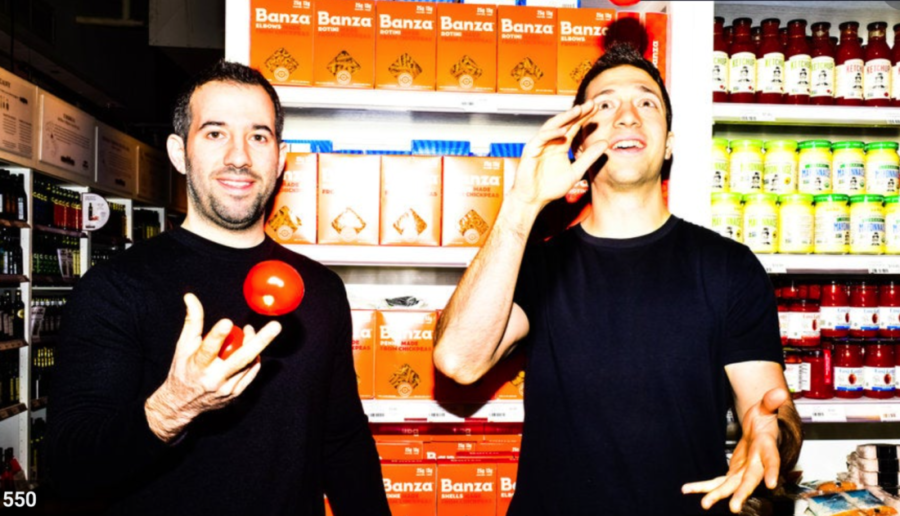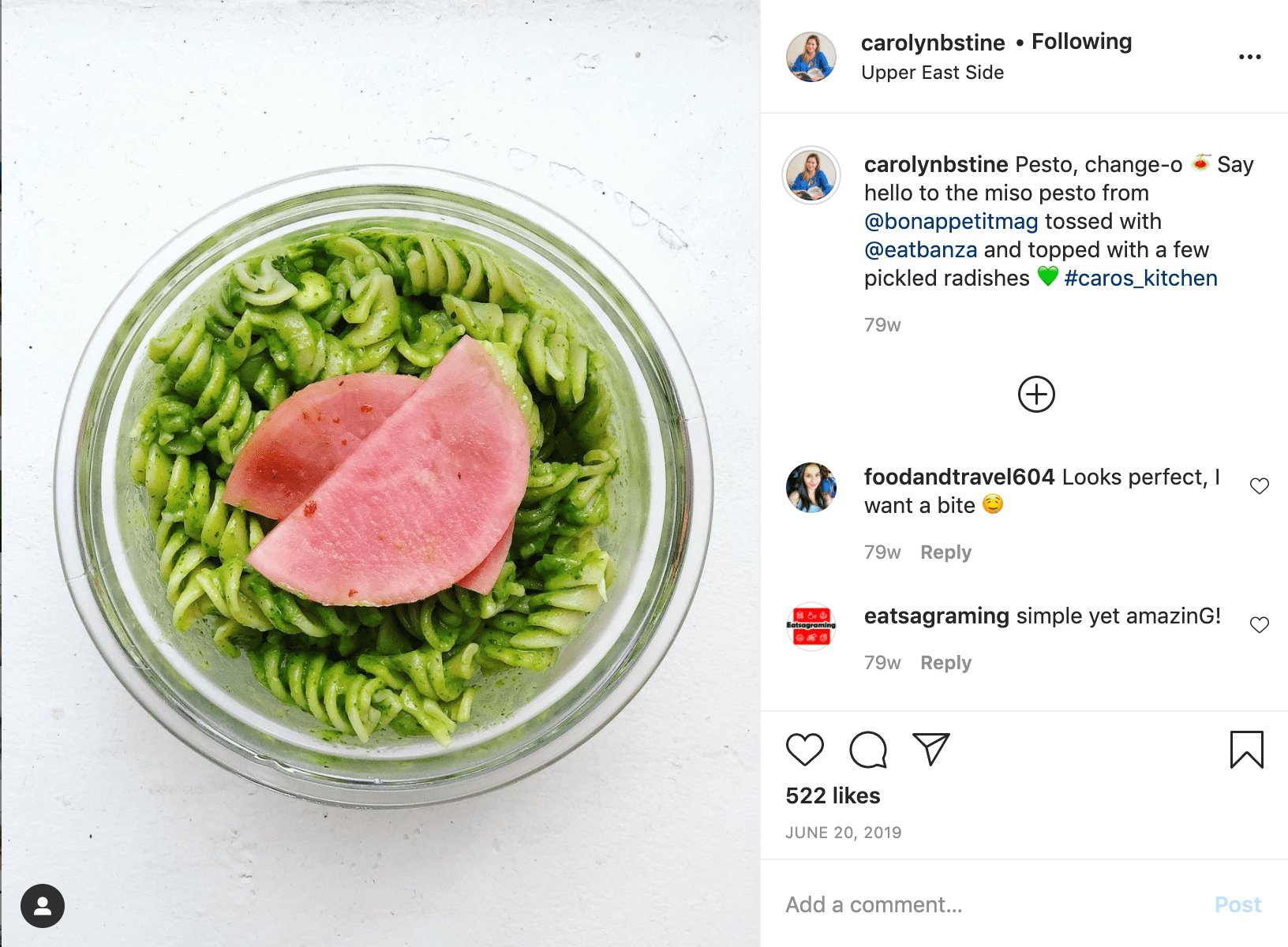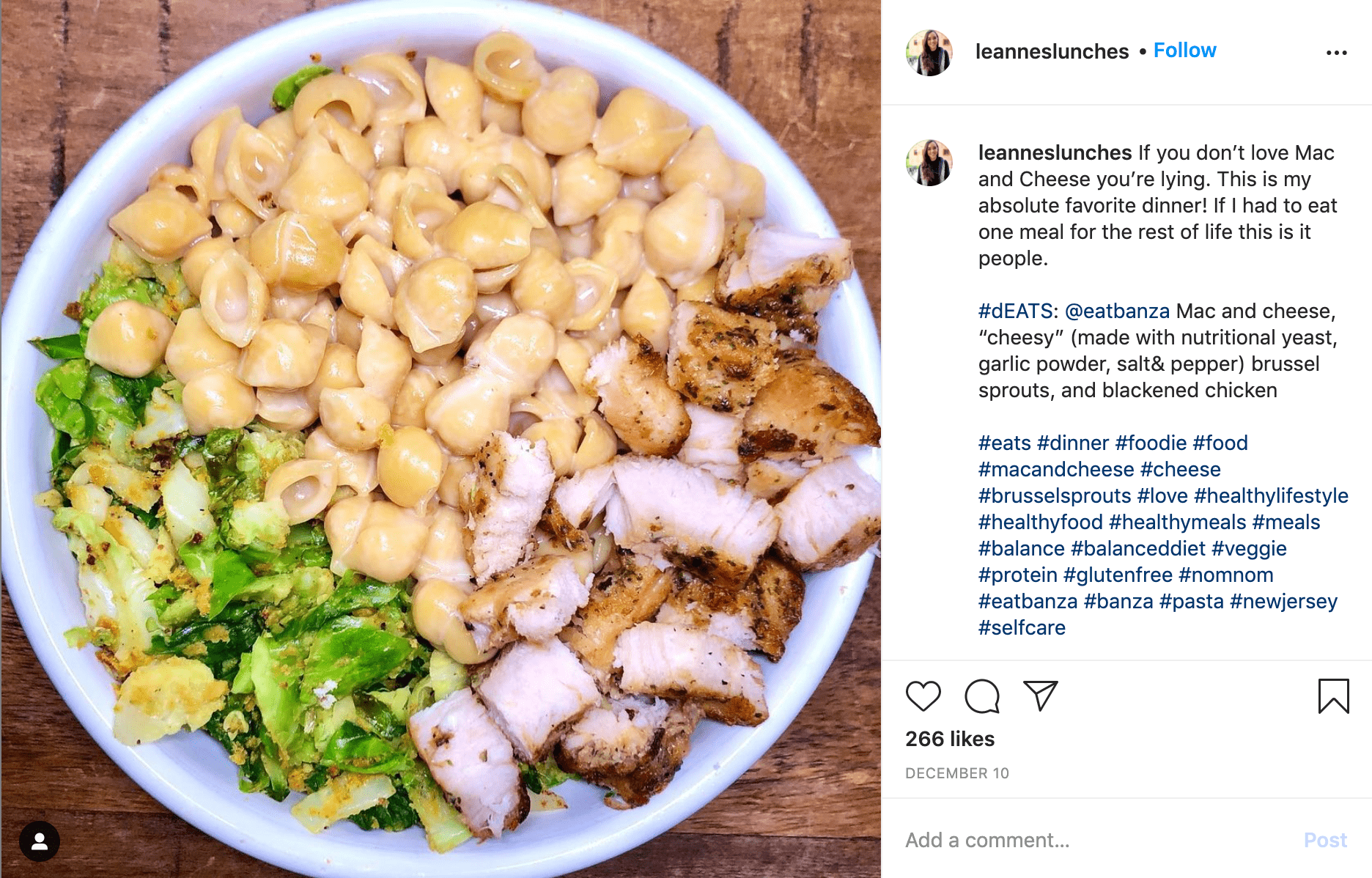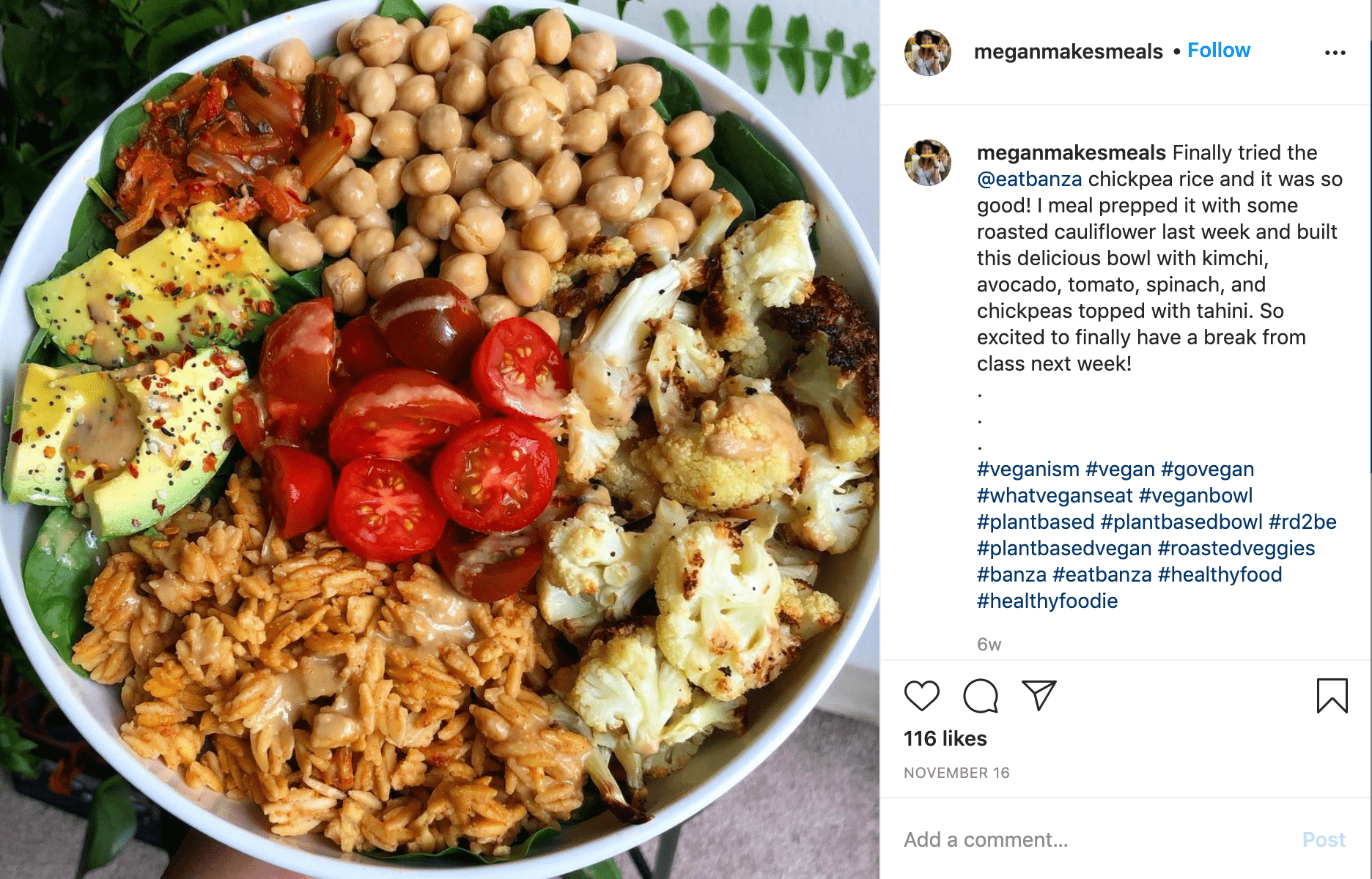In the 2005 bestseller and business classic, Blue Ocean Strategy, authors W. Chan Kim and Renee Mauborgne define market strategies as either “Red Oceans” or “Blue Oceans.” In a Red Ocean, a business enters an established market space, exploiting existing demand and striving to beat the existing competition. On the other hand, in a Blue Ocean, a company creates a new market space where competition doesn’t exist, so the challenge becomes to create and capture new demand.
Both strategies have their own pros, cons, risks, and benefits. For example, while a Red Ocean may be more competitive, a business knows that there is demand, so the challenge is differentiation. However, constant competition often results in having to drive down prices to compete, which puts somewhat of a ceiling on growth. In a Blue Ocean, while there’s a risk in seeing if you can create demand in your new category, the rewards are much greater.
The origins of the Banza product line were decidedly low-key, low-tech, and personal. When Brian Rudolph was developing the pasta for his own consumption in the kitchen of his Detroit apartment, he was casting about for a start-up idea of his own, focusing on technology.
His tech ideas fell flat with his Venture for America mentors and colleagues. But when he casually mentioned the chickpea foods he was making for himself to meet his need for high-protein, gluten-free food, something clicked.
When Banza launched in late 2014, they were the first to create and enter the chickpea pasta market. With a great product and robust marketing strategy, they’ve been able to dominate the space, launch distribution deals in 12,000+ stores, including Whole Foods and Target, and raise funds from some of the most prominent players in the food industry.
Creating a Category
If creating a category was easy, everyone would do it. As mentioned, there is some risk in this strategy. There are no guarantees that you’ll be able to create demand for a product people have never heard of, let alone capture it and convince someone to buy. However, a business can still set itself up for success with smart strategy and data.
In a NY Times interview in 2016, founder Brian Rudolph said, “I couldn’t find a single person who didn’t want a healthier pasta.” While this statement by itself is a bit anecdotal, there is some data to support this.
For one, interest in gluten-free diets had been steadily rising for several years, reaching its apex in November 2013, according to Google Trends data.

Additionally, Rudolph says that he first created Banza in his kitchen while following the Slow Carb Diet, coined and popularized by Tim Ferriss in the Four Hour Body, released a few years earlier. Tim Ferriss has a famously active fanbase, so Rudolph knew he had a passionate audience he could tap into, leveraging communities like Reddit to reach potential fans.

Combine that with the fact that the average American consumes nearly 20 lbs of pasta per year, and it becomes a much safer bet that a significant population would be interested in a more healthy alternative, even if only for some of their meals.
In many ways, Banza followed in the footsteps of Chobani, who set the standard in creating a healthy alternative to an existing popular food. (Banza even joined the Chobani Incubator while getting started, where they received some valuable grant money, and even more valuable advice and guidance).
Launch and PR Rise

Rudolph first toyed with the idea in college, when, on his path to eating healthier, he began experimenting with chickpeas, specifically in pasta. He first tested the waters with his product with a crowdfunding campaign on Venture for America. The campaign raised nearly $18,000, where it won the VFA contest worth an additional $10,000. The marketing efforts ran in tandem with constant appearances at pitch competitions, events where entrepreneurs vie for seed money. At one at the University of Michigan, Brian Rudolph met a judge who connected him with the buyers for Meijer. Months later, the chain placed an order for 20,000 boxes of Banza to stock its 215 stores.
From there, Banza got the opportunity of a lifetime, getting featured on the CNBC reality show “Restaurant Startup,” where they ultimately convinced judge and restaurateur Joe Bastianich to invest in the company.
From there, Banza continued to rack up recognition from various entrepreneurial and innovation groups, scoring some major press wins, including Time magazine’s Top 25 Inventions of 2015, CircleUp25’s Most Innovative Consumer and Retail Brands of 2017, and CNN’s Best Products of 2018.
Driving Engagement
While PR wins are always worth celebrating (and valuable SEO backlinks), they aren’t the cure for long-term success. Long-term success requires getting in front of your customers on a regular basis via multiple touchpoints.
Always being aware and having an eye on consumer trends is key when launching a new brand or product – additionally, knowing and understanding how spending habits change ever so frequently. As a result, Banza has pivoted its marketing strategy over the past year to focus its sales on both traditional retail storefronts, as well as its own digital channels in an effort to keep up with changing shopping behaviors, which has shifted and accelerated significantly during the pandemic.
A brand in a Red Ocean would likely accomplish this by competing in the advertising world. They’d launch campaigns across search and social, selling specific benefits of your product versus their competitors and driving users down the funnel in a way that they’re likely familiar with.
However, these tactics aren’t as turn-key for a brand in a Blue Ocean. There is only so much real estate on a text or social media ad, which makes it difficult to tell your product story in a quick and concise way.
On top of that, even if Banza were able to grab some attention with its differentiation, consumers would be understandably skeptical, and perhaps timid to try it.
Banza realized that for long-term growth, they needed to find a way for users to engage with their products, and have real people vouch for its quality and taste. That’s where influencers came in.
Food has long been one of the top industries for influencer marketing. Food is not only an essential, daily element of people’s lives, but it also becomes an area for creativity and craft. Social media has become the go-to spot for people to share tips or their latest food porn creation. Besides food, health and fitness are among the next biggest industries for influencers, as many people love to share their secrets to success and their fitness journeys. Banza was at the perfect intersection of these and used it to their advantage.
In the early days, Banza had a hard time securing influencers to work with them. With influencer marketing, sending just customized email pitches referring to specific articles and reports with comments on the photos of people with big Instagram followings doesn’t always work in the beginning – especially if you’re not an already established brand.
However, as time went on and Banza gained more recognition, their influencer strategy built up a great deal of momentum, where not only did Banza build up demand among consumers but also among influencers who wanted to share their own creations. When an influencer shares a product, other influencers want that product and a brand deal as well. With the snowball effect, this is the best way to get the product out there for a small business without a ton of resources.
Because of the different interest segments that Banza is able to tap into, the influencer content was always able to remain fresh. Some users recreated classic Italian dishes but made them more healthy by swapping out traditional pasta for Banza. Others focused on the health element, creating dishes that showed their readers how they could re-introduce pasta to their diets and maintain their fitness goals. Others just wanted to show off their creativity.
As of 2018, Banza said they received around 30,000 pieces of user-generated content, 80% of which came from users who had never posted about Banza before.


Not ignoring the importance of effective PR, Confidant was recently awarded ongoing PR work with Banza. They were named one of the 2021 top boutique agencies in North America. The selection of Confidant follows an RFP in late 2020 as well as the hiring of Banza Marketing Communications Manager Nicole McNey in October 2020.
Last year was a pivotal year for Banza. Between better-for-you category momentum, the launch of Banza Pizza and the recent excitement around chickpeas as a staple ingredient, Banza sought out a long-term agency partner to help them tell their brand story in more impactful ways.
Product Expansion
A Blue Ocean can only stay blue for so long. Once people start to see growth in a new category, competitors flock in to steal market share, competing on price, taste, or other product variations. Banza, however, had built up enough brand equity to not only stand out in their category but safely expand into new ones.
User-generated content doesn’t only help spread the word about your brand. It can also provide valuable insights about how consumers are using your product, what they like and don’t like, and what they might like to see next. After seeing post after post of Banza being used as a carb substitute in grain bowls, the next product launch became clear. In 2019, Banza released chickpea rice with three times the protein, twice the fiber, and 30% fewer net carbs than brown rice. This product was easy for customers to adopt, as not only had the market been made for chickpea as a carb alternative, but clear user signals showed they were ready for this product as well.

This expansion continued in 2020 when Banza entered another carb-heavy category – frozen pizzas. This release also piggy-backed off user comfort with chickpeas, but Banza also paid attention to the creativity they saw within their UGC. That is why with pizzas, they released both pre-made pies as well as plain crusts for consumers to put their own creative juices to work. Banza is looking further than the grocery store as well – Food Navigator reported the company hopes to branch into food service.

During the COVID-19 Pandemic
Banza was not left unaffected by the global COVID-19 pandemic. “Your customers aren’t walking through the grocery store, they’re not browsing. They want to get in and get out…” Rudolph says. However, since the world was essentially shut down, that in turn also positively benefited Banza’s online sales business. Since everyone had to shift to an at-home model, chefs and restaurants were shifting to at-home cooking demos and brands marketing at-home DIYS, Banza was also able to shift their business to D2C for the time being, capitalize on and market around ordering products directly to your front door, staying in and cooking at home.
Now, as everyone and everything begins to recover from the pandemic, Banza is also keeping a close watch on consumers’ buying habits. People will start spending more time grocery shopping again, as well as dine in restaurants again – which we’re sure everyone is ready for now.
Takeaway
Much like marketing, product creation can often be a copycat game. Where there’s demand, a smart marketer can almost always find room within a category with their playbook of strategies and tactics. It’s almost formulaic.
But there will always be a ceiling to growth in those categories. Take some notes from Banza’s marketing strategy, and look for your own blue oceans. Instead of battling your competitors at the margins, what are some areas where there is no competition? Look for those spaces that still solve problems, and it’s full steam ahead!





